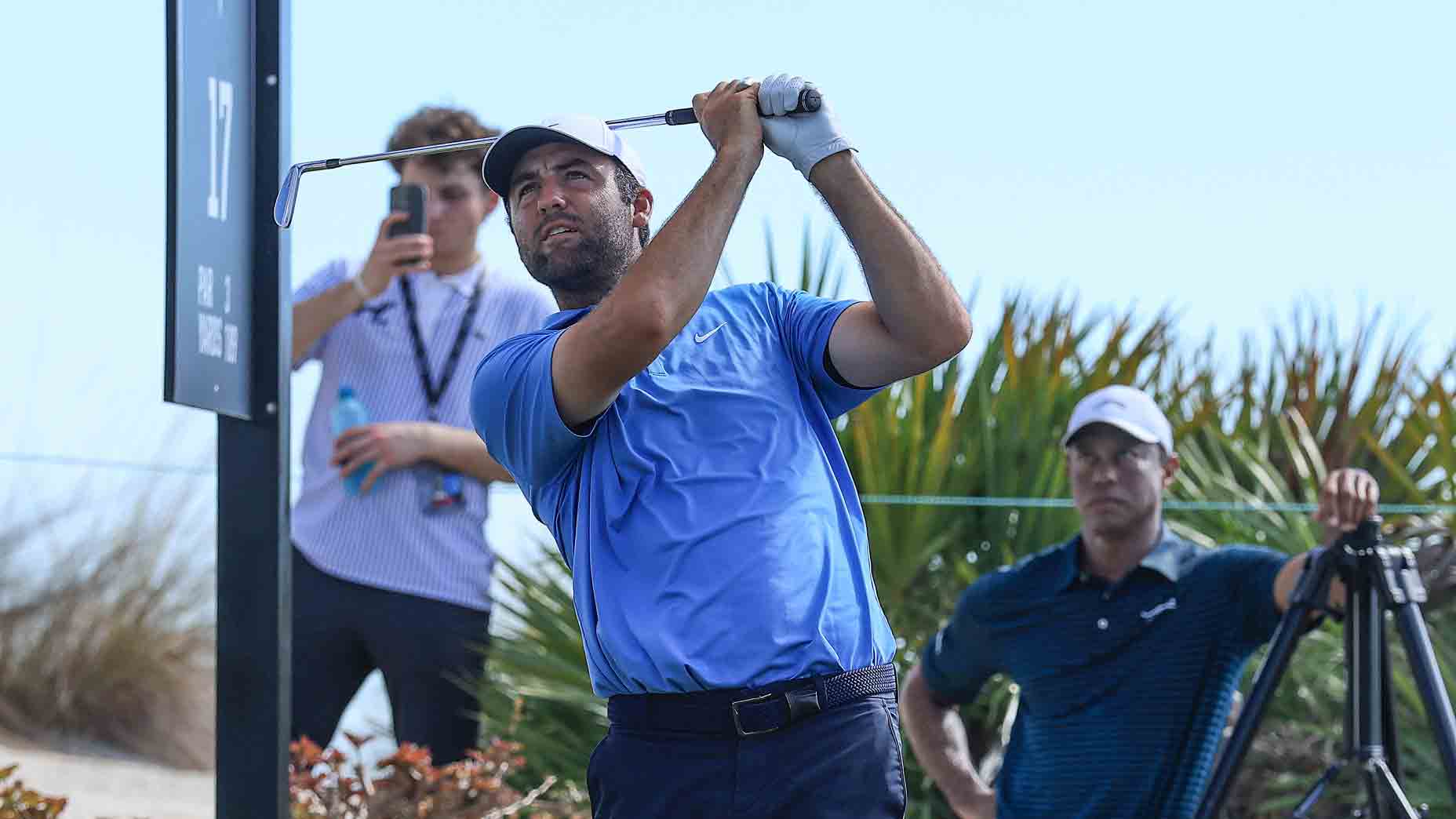Not all tire tracks at the Albany Golf Course are created equal, it seems.
And because of that, not all relief rulings from tire tracks at the Albany Golf Course are the same, either.
Justin Thomas is cognizant of that now, though ahead of this week, he hadn’t fully been.
“I just had never heard that before,” he said.
To start here, during Thursday’s first round of the Hero World Challenge, Thomas went left with his tee shot on the 6th hole at Albany, and his ball finished in a sandy area — and among tire tracks. Here’s where it gets a bit complicated. To note first, the Albany sandy areas are not considered bunkers.
And tire tracks typically do not afford players relief under Rule 16.1 (abnormal course conditions). But tournament committees can elect to do so, and the Hero has — but only for certain tire tracks. So Thomas went to work.
He called over one official. He was denied. Then another. He was denied again.
But why? Wasn’t Thomas in a tire track? Yes — but it wasn’t “extreme” enough.
At Albany, there are a lot of tire tracks. So relief is determined on a case-by-case basis, according to chief referee Stephen Cox.
10 ways to confidently carry the water every timeBy: Kellie Stenzel, Top 100 Teacher
Here is his complete explanation, as provided to GOLF.com via an email on Saturday:
“In an attempt to maintain consistency, the PGA Tour Rules Committee typically employs the following strategy at courses that possess playing areas that consist of dune land or sandy areas.
“Surface imperfections in the sand (whether those be footprints or tire tracks) are to be expected. Such areas are not considered to be abnormal in nature and are a challenge of playing the course. In circumstances when such conditions are extreme (such as a severe vehicle rut where the player cannot get the club on the ball) the Committee may grant relief under Rule 16.1.”
So Thomas played on, and he parred the hole.
On Friday, after his Hero second round, Thomas was asked about it all.
Notably, he said he was somewhat confused over the tournament’s definition.
“I never — it was always my — yeah, it was always my understanding if you’re in a tire track, you get relief,” he said. “I was more calling a rules official over as courtesy to kind of talk me through it. He came over and said because there’s sand everywhere here, you know, it’s pretty common and you get a lot of tire tracks and it just needs to be deep enough.
“Again, it’s just one of those rules, there’s no defined ‘deep,’ only if you kind of can’t get the club on the ball kind of situation.
“The direction I was going, yeah, it definitely could have been deeper, but I had enough stuff behind my ball where I couldn’t go the route I wanted to go because of the tire track.
5 common golf myths that are wrecking your scorecardBy: Joey Wuertemberger, Top 100 Teacher , Nick Dimengo
“I called a second opinion because I just had never heard that before. I asked if it was on the local rule sheet because again, it’s not something that we normally play. And they said it wasn’t, but they had just spoken about it in a rules meeting, but we’re not in those rules meetings.”
Thomas then had one more thought.
“The moral of the story is just to hit the fairway and not have to deal with it,” he said.
“But I learned yesterday, that it has to be deep enough, which whatever that is.”











